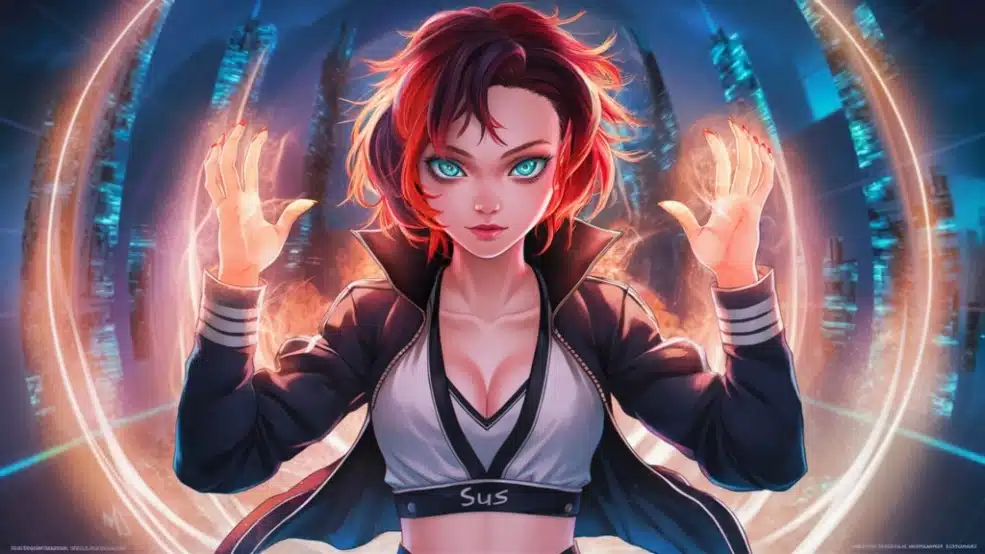Anime, a vibrant and diverse medium originating from Japan, has captivated audiences worldwide with its distinctive art style, compelling narratives, and rich characters. Within this expansive universe, certain terms and trends have emerged that reflect the evolving nature of fan culture. One such term that has gained popularity is “sus images,” a phrase that encapsulates a unique aspect of the anime fandom. In this article, we will delve into the concept of Anime:6tbztsekyf0= Sus Images, exploring their origins, significance, and the broader context within the anime community.
What Are Sus Images?
The term “sus” is a slang abbreviation of the word “suspicious,” and it gained widespread popularity through the online multiplayer game Among Us. In this game, players often accuse others of being “sus,” or suspicious, when they believe someone is the imposter. This slang has since transcended the game and found its way into various online communities, including the anime fandom.
Sus images in the context of anime refer to pictures or screenshots that depict characters in questionable or ambiguous situations, often leading to humorous or speculative interpretations. These images may capture characters in compromising poses, unusual expressions, or scenarios that appear out of context, making them seem “suspicious” or out of the ordinary. Fans often share these images with humorous captions or as part of memes, adding an extra layer of entertainment to the already rich world of anime.
The Origins of Sus Images in Anime Culture
The concept of sus images can be traced back to the broader internet culture where memes and humorous content thrive. Anime has always been a fertile ground for memes due to its expressive art style, which often exaggerates emotions and situations for dramatic or comedic effect. This exaggeration, when taken out of context, can result in images that appear strange or suspicious, hence the term “sus.”
As anime gained popularity worldwide, fans began to interact with the content in creative ways, including the creation of memes and other forms of digital expression. The term “sus” naturally fit into this environment, allowing fans to describe and share images that they found amusing or peculiar. Over time, sus images became a recognized part of anime fandom, contributing to the ever-evolving landscape of internet culture.
Examples of Sus Images in Anime
To better understand the concept of sus images, let’s explore a few common scenarios where these images might arise:
1. Out-of-Context Screenshots
Anime is known for its dynamic and often intense scenes. However, when these moments are captured as standalone screenshots, they can appear confusing or suspicious. For example, a character might be caught in an awkward pose, with an expression that doesn’t quite match the situation, leading viewers to question what is happening. These out-of-context screenshots are prime examples of sus images and are often shared with captions that play on the ambiguity of the scene.
2. Misleading Angles and Expressions
Anime characters are often drawn with exaggerated facial expressions to convey emotions clearly. However, when these expressions are taken out of context or viewed from a specific angle, they can seem bizarre or unsettling. A character might be drawn with wide eyes and a grin that, in the right context, looks friendly, but when isolated, can come across as menacing or “sus.”
3. Unusual Interactions Between Characters
Anime often features complex relationships between characters, ranging from friendships to rivalries to romantic interests. Sometimes, a moment between two characters can be captured in a way that suggests something more than what was intended, leading to speculation or humor among fans. These moments, when shared as sus images, can spark discussions or memes that play on the perceived tension or mystery between the characters.
4. Intentional Humor and Parody
Some anime series intentionally incorporate humor or parody that lends itself to sus images. For example, a character might be placed in an absurd situation or respond in an unexpected way, leading to a scene that is both funny and open to interpretation. These moments are often embraced by the fandom and shared widely as part of the series’ appeal.
The Impact of Sus Images on the Anime Community
The rise of sus images has had a notable impact on the anime community, influencing how fans interact with and interpret the content they love. Here are a few ways in which sus images have shaped anime fandom:
1. Fostering Creativity and Humor
Sus images encourage fans to look at anime from a different perspective, finding humor in unexpected places. This creative reinterpretation of scenes fosters a sense of community, as fans share their discoveries and create memes or edits based on these images. The humor derived from sus images often transcends language barriers, making them accessible to a global audience.
2. Enhancing Fan Engagement
The sharing of sus images often leads to increased fan engagement, as viewers revisit episodes to find similar moments or contribute their own interpretations. This active participation helps keep the anime community vibrant and dynamic, with fans continuously generating new content and discussions based on their findings.
3. Broadening the Appeal of Anime
For those new to anime, sus images can serve as an entry point into the medium. The humor and relatability of these images can pique the interest of potential fans, who may then seek out the source material to understand the context. This broadens the appeal of anime, attracting a wider audience and encouraging more people to explore different series.
4. Contributing to Internet Culture
Sus images are a testament to the adaptability of anime within the broader context of internet culture. As part of the larger meme ecosystem, these images contribute to the ongoing dialogue between different fandoms and online communities. The cross-pollination of ideas and humor from various sources helps keep internet culture fresh and ever-evolving.
Controversies and Challenges Surrounding Sus Images
While sus images are generally viewed as a fun and harmless aspect of anime fandom, they can sometimes lead to misunderstandings or controversy. Here are a few challenges associated with the proliferation of sus images:
1. Misinterpretation of Content
Because sus images are often taken out of context, there is a risk that they may be misinterpreted, leading to confusion or misinformation. A viewer unfamiliar with the source material might draw incorrect conclusions about a character or scene, potentially leading to negative perceptions of the anime.
2. Crossing the Line of Taste
While most sus images are shared in good fun, there is a fine line between humor and insensitivity. Some images may unintentionally offend or alienate certain viewers, particularly if they involve sensitive topics or characters in vulnerable positions. It’s important for fans to be mindful of the impact their content may have on others within the community.
3. Overshadowing the Original Intent
There is also a risk that the focus on sus images could overshadow the original intent of the anime. When scenes are repeatedly taken out of context for humor, the narrative or emotional impact of the story might be diluted, leading to a skewed understanding of the series as a whole.
Conclusion
Sus images represent a fascinating and entertaining aspect of anime fandom, reflecting the creativity and humor that define this vibrant community. While they are often humorous and light-hearted, it’s important to approach sus images with an understanding of their context and the potential for misinterpretation. As anime continues to grow in popularity, the role of sus images within the broader culture is likely to evolve, contributing to the ever-changing landscape of online fandom.

